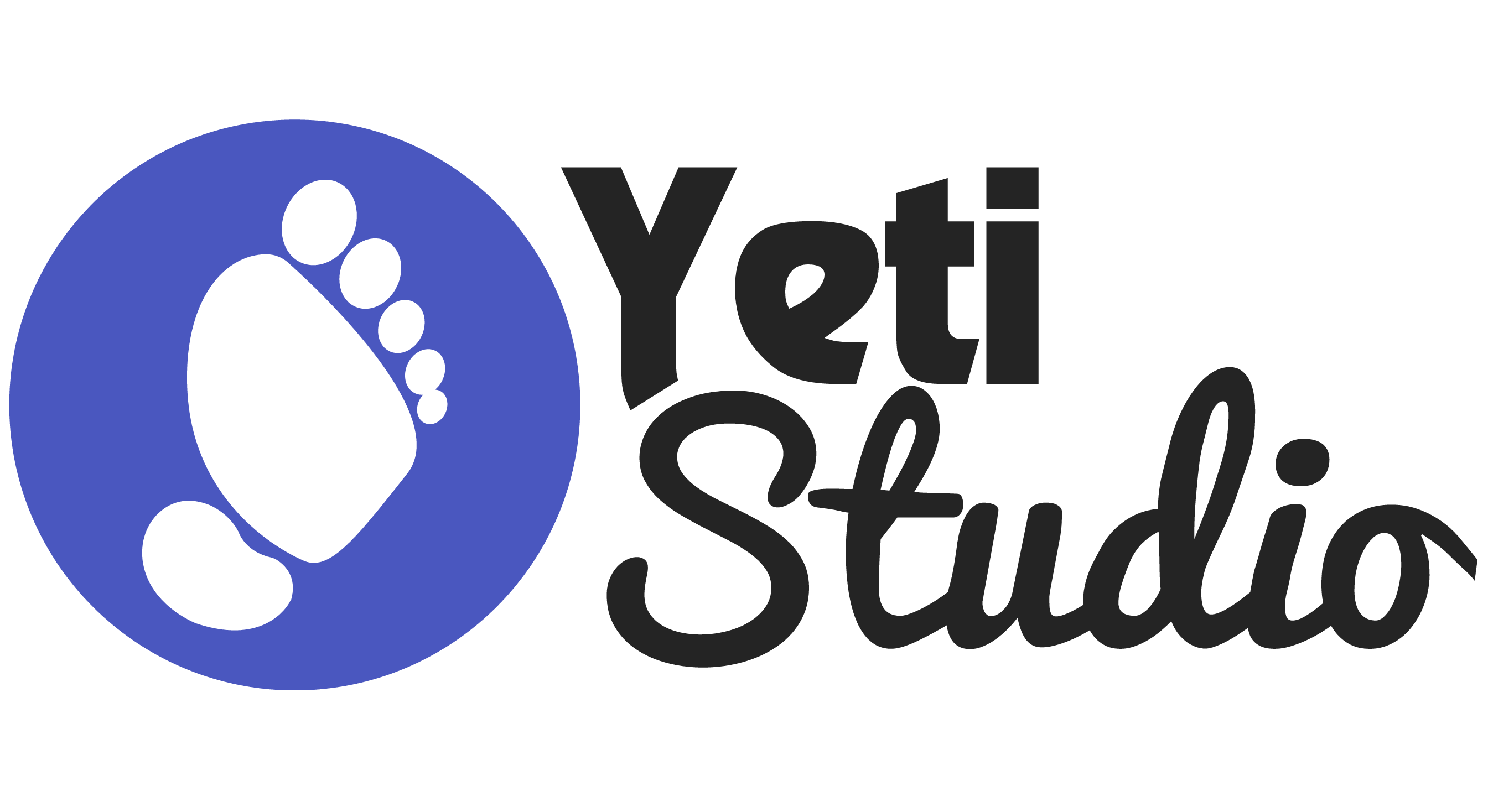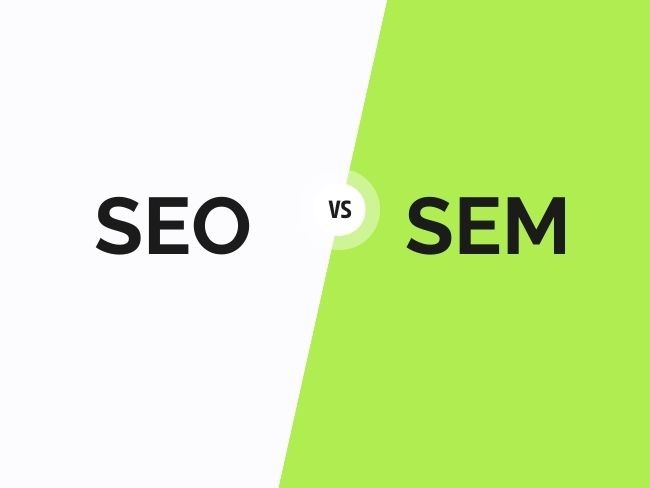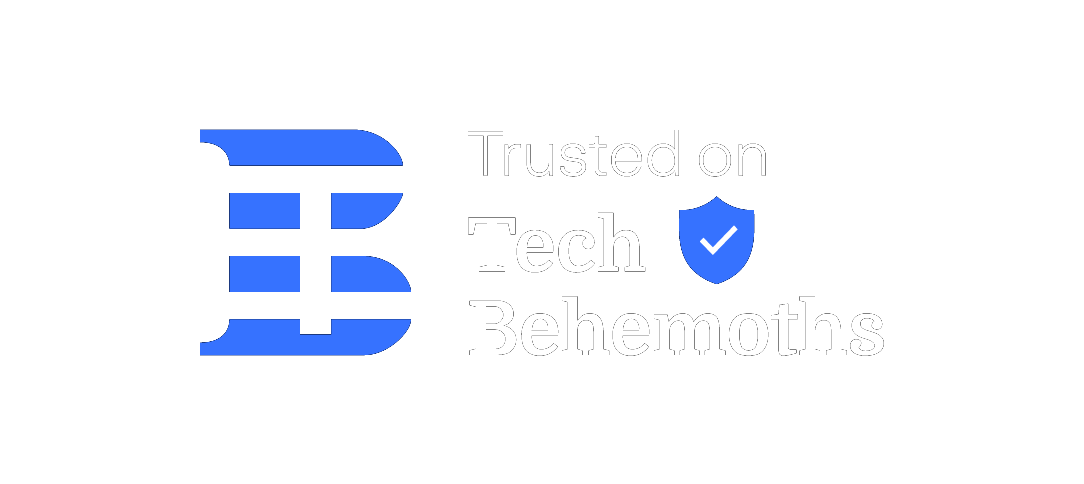The main difference between SEO and SEM is that SEO focuses on generating organic traffic by optimizing a website for organic search results whereas SEM focuses on driving traffic from organic and paid advertisements specifically PPC.
Table of Contents
1. What is SEO?
2. What is SEM?
3. Pay-Per-Click
4. Differences between SEO and SEM
5. Conclusion
Both SEO and PPC are ways to promote your business in the search engines. So both are a type of search engine marketing (SEM).

Figure: Types of Search Engine Marketing(SEM)
Let’s take an example.
When someone searches for anything in the Google search bar, he/she uses certain keywords to search for the things they are looking for. After searching, user find relevant results to their queries in the Google search results.
The Google search result is divided into two main categories: The paid search result section and the organic search result section.
The top sponsored section i.e. paid section helps to rank your website through Pay Per Click(PPC)

Figure: Paid results and organic results in SERP
Figure: Organic vs Paid result demonstration in Search Engine Result Page (SERP)
The section below shows organic search results. It is usually done through 100% organic SEO optimization. No paid advertisement is used.
In this blog, you’ll learn about the major difference between SEO and SEM. Also, you will know about how it affects your website in Google SERP.
Now, let’s understand SEO and SEM in detail.
What is SEO?
SEO is the process of continually optimizing your website to rank at the top of SERP to increase organic traffic.
There are many tactics involved in SEO. But the major ones include:
- On-Page SEO
- Off-Page SEO
- Technical SEO
1. On-Page SEO:
This is where you optimize your website with relevant keywords for your content and target the search intent of customers in Google, Bing, etc. It includes keyword research and implementation, meta tags, headings, URLs, image optimization, and link building. You need to place your keywords on each web page of your website.

Figure: On-Page SEO techniques
2. Off-Page SEO:
Off-page SEO includes all the activities you perform outside of your website to increase its visibility and rankings on search engines. It is all about getting trust and authority signals from other websites.
Building high-quality backlinks is the most effective off-page SEO technique as backlinks are one of Google’s top ranking factors.

Figure: Off-Page SEO Techniques
Let’s say, our website is getting backlinks from high DA websites on certain topics or content. This shows trust and authority to Google about our website and helps us to rank higher in the SERPs.
3. Technical SEO:
Technical SEO is the process of finding, crawling, and indexing your website in the SERP by search engines. Without these steps, you cannot rank your website in the search results.

Figure: Technical SEO tactics
You need to make sure all your web content is crawlable so that search engines can index your pages in search results. It ensures that your site is optimized for search engines.
What is SEM?
SEM is the process of getting traffic to your website through organic SEO or Paid advertisement. Generally, Pay-per-click is used to get traffic from paid results.
It is the promotion of websites by increasing their visibility in search engine results pages (SERPs) through paid advertising. SEM includes both SEO and PPC (Pay-Per-Click) advertising strategies.
Pay-Per-Click:
PPC stands for Pay-Per-Click advertisement. This is the process of purchasing an advertisement that is displayed on a search engine result page. Here, marketers place bids on keywords, and the actual ads display based on the bid and the keyword’s relevancy. The advertiser is charged a fee each time a user clicks on their ad. This is also known as Cost Per Click (CPC).

Figure: Pay-Per-Click Advertisement
Key components of PPC:
1. Keyword Research :
The goal of keyword research for search engine marketing is to identify the most effective terms that consumers use to discover a good or service. This type of study aids in the efficient use of advertisements to run campaigns.
2. Ad creation and optimization :
Making ads that get clicked and result in conversions is your responsibility. The first step in all of this is crafting effective ad text. Next are strong calls to action and continuous tuning for better ad effectiveness.
3. Audience Targeting:
Targeting the right audience is crucial for maximizing the effectiveness of PPC campaigns. Identifying the target market, utilizing audience segmentation, and refining audience targeting based on data analysis are strategies to ensure that the ads reach out to the most relevant audience.
4. Optimizing Landing Page:
A well-designed landing page uses focused information, obvious calls-to-action, and fast load speeds to guarantee that any user who clicks on your ads has a relevant and seamless experience.
5. Bid Management:
You will get the maximum return on your money if you handle your advertising well. This entails making the appropriate bid revisions in light of competitor analysis and performance data.
6. Performance Tracking and Analytics:
To determine what is and is not working with his SEM efforts, one must keep an eye on their results. You are in a better position to monitor KPIs like cost per acquisition, click-through rates, and conversion rates with Google Ads and Analytics.
Differences between SEO and SEM:

Figure: SEO vs SEM
Now. let’s look at the major differences between SEO and SEM:
| Aspect | SEO | SEM |
| Definition | Optimizing website to rank organically in search engines result pages. | Includes both organic SEO and paid search advertising (PPC). |
| Cost | Typically no direct cost per click. Investment in content and optimization. | Direct costs for each click (PPC) and ad spend. |
| Time to Results | Advanced Targeting options: demographic, location, and behavior. | It delivers immediate results after running PPC campaigns. |
| Longevity of Result | Long-lasting results that continue with ongoing efforts. | Results last as long as the ad spend continues. |
| Traffic Type | Organic, free traffic. | Paid traffic through ads. |
| Click-Through Rate (CTR) | Higher CTR for organic results due to user trust. | Typically lower CTR as users may be skeptical of ads. |
| User Trust | Higher user trust due to organic traffic | Lower user trust since they know it’s a paid promotion |
| Targeting | Limited targeting options: mainly through keyword optimization | Advanced Targeting options: demographic, location and behavior. |
| Ad Copy and Creative | Involves content creation and on-page elements. | Advanced Targeting options: demographic, location, and behavior. |
| Measurement and Analytics | Uses tools like Google Analytics for tracking organic performance. | Uses detailed analytics from ad platforms (e.g., Google Ads). |
| Performance Tracking | Involves monitoring organic rankings, traffic, and engagement. | Requires continuous monitoring and adjusting of ad spend and targeting. |
| Algorithm Dependency | It delivers immediate results after running PPC campaigns | Less affected by algorithm changes; more control over placement with ads. |
Conclusion:
SEO and SEM work together to form the two essential components of every digital marketing effort, each with its benefits and applications. SEM provides instant visibility and traffic through paid advertising, whereas SEO considers long-term, sustainable growth through organic search optimization. Knowing the differences between them can also assist businesses choose which one to pursue based on their timeframe, budget, or goal.
Choosing the right SEO and SEM strategy is crucial for any business. So, go for the strategies that best suit you and align with your business objectives.
Also, visit the following pages you may like:
Environmental Sustainability: Digital Innovation For A Greener World
Tap Into The Magic Of Local SEO: An In-Depth Guide
Transforming Interaction: The Emerging World of Conversational UI
Content Writing Guide: How To Create Engaging Content?
Mobile Number: 977-9808271089 (WhatsApp)
Email Address: info@yetistudio.co
Address: Baraha Marg, Dhumbarahi, Kathmandu, Nepal






Comments are closed